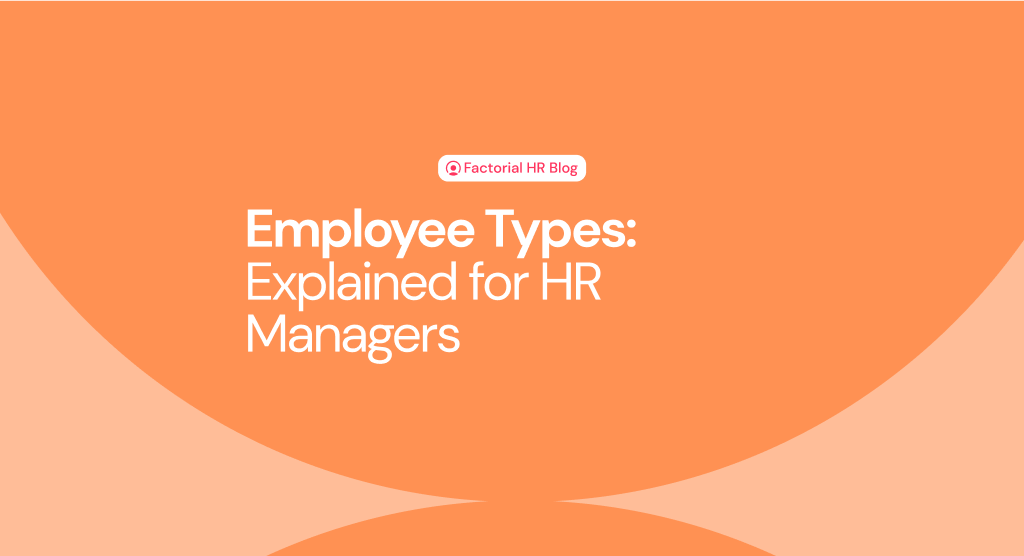Flexibility has become a fundamental aspect of the modern workplace due to shifting work dynamics and the desire for a better work-life balance. As a result, employers now recognize that offering solutions like flex hours can help them attract and retain top talent, increase productivity, and adapt to evolving business needs.
But what are flex hours, exactly? And would this solution work in your business?
This post will provide you with valuable insights and practical advice on how to effectively implement and manage flex hours in your organization. Whether you’re a business owner or an HR professional, this guide will explain everything you need to know to create a successful flexible hours policy that enhances work-life balance, boosts productivity, and supports employee satisfaction.
What are flex hours? Meaning for employers
Let’s start by exploring the meaning of flex hours.
Flex hours, also known as flexible working hours or flextime, refers to a working arrangement where employees have the flexibility to determine their own schedule within a specified range, while still fulfilling the required number of working hours. The concept emerged as a response to the conventional 9-to-5 work schedule, which was rigid and often did not accommodate the varying needs and lifestyles of employees.
The history of flex hours dates back to the 1970s when companies began experimenting with alternative work arrangements. The oil crisis during that period prompted organizations to explore ways to reduce energy consumption, leading to the introduction of staggered work schedules. This marked the early beginnings of flex hours.
Over time, the concept gained popularity as numerous studies highlighted the potential benefits of flexible working arrangements, such as increased employee satisfaction, improved work-life balance, and enhanced productivity. As a result of this, together with the changing dynamics of the workforce, many organizations started adopting formal flex hours policies to provide employees with greater autonomy over their schedules.
Today, flex hours have become more prevalent across various industries and sectors. Advancements in technology, particularly the rise of remote work and digital communication tools, have further facilitated the implementation of flexible work schedules. In fact, according to the Equality and Human Rights Commission, 63% of full-time employees are now working in a flexible role.
Pros and cons of flexible working hours
Before implementing flexible working hours in your organization, it is crucial that you carefully evaluate the pros and cons associated with this approach. This will allow you to make an informed decision and determine if flex hours align with your organizational culture, employee needs, and operational requirements.
Let’s explore the pros and cons.
Advantages of offering flex hours
Implementing flex hours in the workplace can offer a range of advantages for both employees and employers.
Here are the key benefits:
- Work-life balance. Flex hours enable employees to better manage their personal obligations, resulting in reduced stress and improved work-life balance.
- Employee satisfaction and engagement. Offering your employees flex hours shows them that the organization values their needs, leading to higher job satisfaction, engagement, and morale.
- Increased productivity. With a flexible schedule, employees are able to work during their most productive hours, leading to enhanced efficiency and increased productivity. This can also help to increase focus and eliminate potential time wasters.
- Increased accountability. This form of scheduling can boost employee accountability as individuals are empowered to take ownership of their work and manage their time effectively.
- Reduced absenteeism. Flex hours enable employees to handle personal matters without taking full days off, minimizing disruptions and reducing absenteeism. To the same effect, this approach can also help you reduce employee tardiness, especially if your employees are often late due to personal commitments.
- Talent attraction and retention. Many job seekers these days value perks and benefits just as much as salaries. As a result, offering flex hours can help you attract and retain top talent in a competitive job market.
- Diversity and inclusion. Flex hours accommodate employees with varying needs, contributing to a more diverse and inclusive workforce.
- Employee health and wellbeing. Flex hours support employees’ physical and mental health by allowing time for exercise, self-care, and medical appointments.
- Enhanced loyalty and reduced turnover. Flex hours foster employee loyalty and commitment to the organization, increasing retention and reducing turnover costs.
Disadvantages of offering flex hours
These are the potential drawbacks of implementing flex hours that you also need to be aware of:
- Difficulty in scheduling meetings. Coordinating meetings can become more challenging when employees have different schedules.
- Inequity and perceived favoritism. If you decide to offer flexible work hours, it’s important to do so consistently. Otherwise, it can create feelings of unfairness or claims of favoritism among employees. This, in turn, can lead to morale issues and strained relationships.
- Reduced collaboration and communication. When employees have different schedules and they are not present in the office at the same time, it can be challenging to coordinate meetings, share ideas, and have spontaneous discussions. It can also impact your corporate culture, especially if your employees work remotely.
- Customer service challenges. Flex hours can result in delayed response times for customer-facing roles, potentially impacting customer satisfaction.
- Time tracking challenges. Monitoring employee working hours becomes more complex with flex hours, making it harder to ensure accurate timekeeping and prevent potential abuse.
- Burnout risk. Flexible work arrangements can blur the boundaries between work and personal life, potentially leading to overworking and burnout.
- Scheduling issues. Flex hours can make it harder to schedule tasks and, as a result, require additional planning and coordination.
Although there is always a risk of all the above, you can avoid these drawbacks by using the right tools and technology to manage communication, scheduling, feedback, performance management, and timekeeping. More on this below.
How to create a flex hours policy
If you’ve decided that this approach might work well in your business, the next step is creating and implementing your flex hours at work policy.
Here’s everything you need to do to launch an effective policy that helps you leverage the benefits and reduce the risks associated with flextime.
Assess needs and preferences
The first thing you need to do is assess the needs of both your organization and your employees. Consider the nature of your business and how flex hours might impact operations.
In terms of your employees, it’s a good idea to conduct surveys, interviews, or focus groups to gather insights on preferred work schedules, potential challenges, and desired flexibility options. This feedback is vital as it will help you design a policy that meets the specific needs of your workforce.
Identify legal considerations
Secondly, make sure you understand all legal and regulatory requirements. Familiarize yourself with federal and state labor laws, employment contracts, collective bargaining agreements, and any specific regulations related to work hours, overtime, and comp time. Make sure that your policy complies with these obligations. That way, you will avoid potential legal issues and maintain a compliant work environment.
Define eligibility
Once you’ve done that, the next step is to clearly define who will be eligible for flexible hours. Keep in mind that this form of scheduling might not work for your entire workforce. Consider factors such as job roles, performance levels, and seniority. Also, make sure you determine if there are any limitations or restrictions based on specific roles or responsibilities. For example, certain roles that require constant customer interaction or adherence to specific working hours might not be suited to this approach.
By clearly defining who is eligible and setting appropriate guidelines, you can ensure that your policy aligns with the needs of your organization and maintains operational efficiency.
Create flex hours schedules
This next step is at the core of your policy: identifying the most suitable flex hours schedule for your workforce.
There are various types of flex hours arrangements that you can offer your employees.
Common options include:
- Flexible start/end times. Employees have the flexibility to choose their start and end times within a specified range of hours. For example, employees can start their workday anytime between 7 am to 10 am and end it between 4 pm to 7 pm.
- Compressed workweek. This is where you offer employees the option of working longer hours on fewer days. For example, employees could work four 10-hour days instead of the traditional five 8-hour days. A popular example of this is the 9/80 work schedule.
- Part-time or job sharing. This is where employees have the opportunity to work reduced hours or share a full-time position with another employee. This arrangement allows for greater work-life balance and can accommodate personal obligations or other commitments.
- Swing shift hours. Finally, this option typically involves a shift that starts in the afternoon or evening and extends into the night. Although similar to the 9/80 work schedule, the two approaches differ in their structure and timing. Essentially, swing shift hours are typically focused on accommodating non-traditional work hours, while a 9/80 schedule aims to compress the workweek and provide additional days off.
Make sure you assess the feasibility and suitability of each option based on your organization’s needs, job requirements, employee preferences, and operational considerations.
Establish core hours
Don’t forget to establish core hours when you design your schedules. These are specific periods during which all employees are required to be present or connected. This ensures sufficient overlap for collaboration, meetings, and effective communication. As a result, you will have a good balance between flexibility and coordinated teamwork.
Communicate performance expectations
A crucial element of launching a successful flex hours policy is establishing clear performance expectations from the start. Make sure you communicate to your employees that they are still accountable for performing their duties, meeting deadlines, and achieving their performance goals. Emphasize the importance of maintaining productivity and delivering high-quality work, regardless of the level of flexibility that you offer them.
Create clear communication channels
As we saw above, one of the potential drawbacks of offering flex hours is that it can negatively impact communication and collaboration. As a result, it’s essential that you implement accessible communication channels. You also need to establish clear availability expectations. Make sure your employees understand that they are expected to communicate with their teammates regularly during core working hours. Emphasize the importance of being reachable and responding promptly to emails or messages. This will help you avoid misunderstandings and potential workflow disruptions.
Outline a request and approval process
When creating a flex hours at work policy, it’s crucial that you have a clear procedure in place for submitting requests for flexible work arrangements. This is especially important if you are also incorporating a flexible time off policy. You also need to specify who is responsible for reviewing and approving these requests. Plus, you need to clearly communicate the criteria that will be considered when evaluating requests.
Above all, make sure the process you use is applied consistently to avoid claims of discrimination or favoritism.
Implement tools for time and attendance tracking
Finally, make sure you use the right tools for time and attendance tracking. That way, you will have access to accurate records of employee working hours and you will avoid potential time management challenges. This is especially important when it comes to remote employee time tracking as you have no direct visibility over when employees are working.
Make sure you look for digital tools with features that can support flexible schedules, such as an electronic time clock with clock-in/clock-out features, timesheet software, payroll integration, and automated reporting.
Flex hours policy examples
Let’s take a look at a couple of examples of well-known companies that have implemented successful flex hours policies. That way, you will get a better idea of how this approach might work in your organization.
Amazon flex hours
Amazon has introduced a groundbreaking initiative that offers parents, grandparents, and guardians of school-age children the option to work during term time only. This innovative Amazon flex hours contract ensures that employees can enjoy guaranteed time off during the six-week summer break, as well as the two-week Easter and Christmas holidays.
In addition, Amazon has also announced the introduction of a new flexible part-time contract. This contract requires a minimum commitment of 80 hours per month and allows employees to choose shifts that align with their specific needs. This includes part-day or full-day shifts, daytime or nighttime shifts, and shifts on weekdays or weekends.
The introduction of these contracts addresses the challenges faced by individuals who are seeking employment but require flexibility due to family or other commitments. By offering these flexible work options, Amazon is creating opportunities for people to return to the workforce and achieve a better work-life balance.
Appen flex hours
Appen, a machine learning company, conducted an internal survey among its team and made an interesting discovery. With 350 full-time employees enjoying flexible work options, Appen found that while flexibility was appreciated, it sometimes led to feelings of isolation. To address this, the company made a concerted effort to foster a more connected and collaborative culture.
Starting in 2017, Appen began investing in various tools to facilitate connectivity, including video conferencing, instant messaging, and document collaboration solutions. Additionally, the company established an internal community forum where employees could troubleshoot common issues, engage in casual conversations, and get to know each other better.
The impact of these initiatives has been significant. Within one year, Appen witnessed a 5% decrease in attrition and an 80% increase in employee satisfaction. This transformation highlights the positive outcomes that can be achieved by proactively addressing the potential drawbacks of flexible work arrangements and prioritizing the creation of a supportive and connected work environment.
Managing flex hours: Tips & best practices
As we’ve seen in today’s post, flex hours can provide your organization with a number of appealing benefits. However, it’s important to use the right approach and implement the right tools to support your policy.
Here are a few additional tips and best practices to help you effectively manage flexible hours in the workplace:
- Make sure you establish clear guidelines and expectations, especially in terms of communication, availability, and collaboration.
- Set specific core hours during which all employees must be available for meetings and collaboration. This ensures sufficient overlap for teamwork and communication.
- Provide employees with tools to schedule and manage their flex hours effectively. This includes shared calendars, time-tracking software, and project management tools.
- Define clear performance metrics and goals and remind employees that they are responsible for meeting these objectives consistently.
- Evaluate performance based on results and outcomes rather than hours worked. Focus on quality of work, meeting deadlines, and achieving objectives to ensure fairness.
- Conduct regular check-ins with employees to assess progress, provide feedback, and address challenges.
- Regularly review your policy and request employee feedback to identify areas for improvement.
Simplify flex hour management with Factorial
We hope that today’s post has given you a clearer idea of how flex hours can benefit your business. Above all, remember that the key to success is communicating clear guidelines and expectations and using the right tools and technology to facilitate transparency and clear lines of communication and collaboration.
Factorial can help with this.
In fact, our all-in-one HR software solution includes a range of features that can streamline and enhance the way you manage flex hours and help you avoid the potential drawbacks of this approach.
For example, you get access to features for:
- Time tracking: Intuitive tools for accurately recording work hours and breaks.
- Assessing employee needs: Create and share employee surveys to gather valuable insights on preferences and satisfaction.
- Scheduling: Efficiently create and manage flexible work schedules, avoiding conflicts.
- Performance management: Set clear goals to promote accountability, provide feedback, and track employee performance.
- Communication: Access to a centralized platform for seamless collaboration among team members.
- Request and approval process: Create a seamless workflow for submitting and approving flex hour and time off requests.
As a result of all this, you can effortlessly create a flex hours policy that meets the needs of your employees, promotes a healthy work-life balance, and, most importantly, enhances overall productivity and satisfaction in your business.









